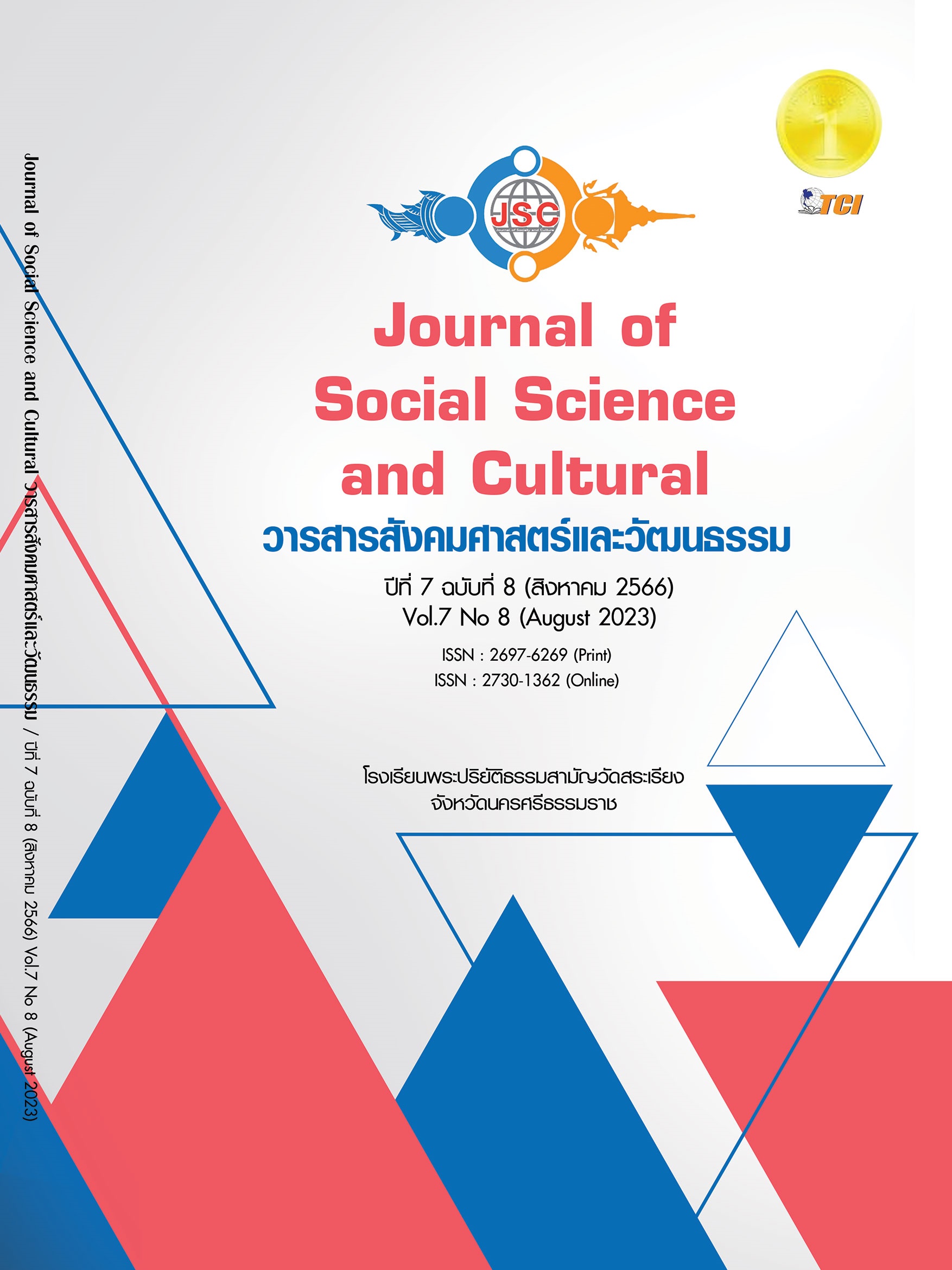GOVERNMENT ORGANIZATIONS USE CANNABIS FOR MEDICAL PURPOSES
Main Article Content
Abstract
The objectives of this research article were: 1) study the management and operation of government organizations using marijuana for medical purposes; 2) study the components of factors affecting the administration of government organizations using marijuana for medical purposes; and 3) propose guidelines for managing changes in government organizations using marijuana for medical purposes. It is a descriptive study using qualitative research methods that use in - depth interviewing techniques like group focus and brainstorming. The main informants were divided into 3 groups: Group 1: government organizations using marijuana for medical purposes, 5 cases; Group 2: medical marijuana specialists, academics, medical personnel, pharmacists, 12 cases; and Group 3: public sector 7 cases and patients receiving services 10 cases, Total number of key informants in Group 3 were 17 cases, total of 34 key contributors. The tools used for data collection were semi - structured interviews. The results showed that: 1) Governments involved in medical cannabis must comply with laws and regulations that authorize and regulate the cultivation and production of medical cannabis. This includes quality control management and standards for the supply of medical cannabis to stakeholders. 2) Factors affecting the regulation of cannabis use by government organizations for medical purposes, namely cannabis use policy education and promotion of medical marijuana use; monitoring, monitoring, legal and staff experience and expertise; and 3) Guidelines for changes in government organizations using medical cannabis, including research and education. Develop laws and regulations, talent training and development, quality control, and safety. Promote the use of medical marijuana through pricing and taxes, as well as monitoring and evaluation.
Article Details
References
บัณฑิต ศรไพศาล. (2562). คิดให้ชัดกับนโยบายกัญชาทางการแพทย์ของประเทศไทย. วารสารวิชาการสาธารณสุข. 28(4), 755-766.
ประทุมพร กำเนิดฤทธิ์. (2565). หลักพุทธธรรม: กฎหมายกัญชาทางการแพทย์. วารสารสันติศึกษาปริทรรศน์ มจร. 10(5), 2326-2335.
พิทยา สุนทรประเวศ. (2564). การพัฒนากัญชาทางการแพทย์ในวิสาหกิจชุมชน. วารสารวิชาการไทยวิจัยและการจัดการ. 2(1), 86-102.
สำนักงานคณะกรรมการป้องกันและปราบปรามยาเสพติด. (2559). กัญชาถูกฎหมายจะช่วยหรือบ่อนทำลายประเทศชาติ. เรียกใช้เมื่อ 25 มกราคม 2563 จาก: https://oncb.go.th/ ncsmi/hcannabis2/กัญชาถูกกฎหมาย%20จะช่วยหรือบ่อนทำลายประเทศชาติ.pdf.
สำเริง แหยงกระโทก. (2562). นโยบายรองนายกรัฐมนตรีและรัฐมนตรีว่าการกระทรวง สาธารณสุขด้านสุขภาพ. เรียกใช้เมื่อ 23 ตุลาคม 2562 จาก: file:///C:/Users/User/ Downloads/Dr Sumruang%20(4).pdf.
สืบพงศ์ สุขสม. (2563). นโยบายการพัฒนาเขตเศรษฐกิจพิเศษจังหวัดเชียงราย. วารสารวิชาการมหาวิทยาลัยนอร์ทกรุงเทพ. 9(2), 1-10.
เอกพร รักความสุข. (2561). การวิจัยเชิงคุณภาพ: หลักการและแนวปฏิบัติ. พิมพ์ครั้งที่ 3. กรุงเทพมหานคร: โรงพิมพ์เดือนตุลา. โครงการผลิตตำราระดับบัณฑิตศึกษา มหาวิทยาลัยเวสเทิร์น.
Mazmanian, Daniel A. and Paul A. Sabatier. (1989). Implementation Public Policy. Latham, Maryland: University Press of America, Inc.
Michael Bagges. (2020). Medical CANNABIS. Translated from Cannabis Pharmacy. By Jarweephonkit. Bangkok: Arrow Publishing.
Sandy Kristin Piderit. (2000). Rethinking Resistance and Recognizing Ambivalence: A Multidimensional View of Attitudes Toward an Organizational Change. Academy of Management Review. 25(4), 23-34.


